Delamere Forest is another club celebrating its centenary this year. Although the club was founded in 1910, the course and clubhouse were not opened until 1911. The opening match on 29th April featured James Braid, Sandy Herd, Ted Ray and James Arundel, the clubís first professional. Rayís winning score in the morning was 77, confirming the difficulty of the new course. The Times, Liverpool Courier and Chester Currant each carried extensive reviews of the course and the play. Fowlerís bunkers came in for much comment and Fowler was present at the opening, in the company of the Oxford University Captain Arthur Croome who would later work with Fowler and Simpson. Unfortunately there is no surviving record of what Fowler may have done towards the design. There are no records of payment, nothing in the minutes and no surviving photographs. A past secretary, the formidable Tony Leggard, wrote a description of the course from information given to him by an aged club member who had caddied on the course, and there is in the clubhouse an attempt to lay out the route of the course over todayís course, but I am told that it is not entirely accurate. The newspapers mentioned above all gave slightly different yardages for the holes. And, the aforementioned Leggard, describing the course says that it was laid out by one of the founding members Willie Clegg. Its yardages were roughly:
1. 365
2. 170
3. 395
4. 394
5. 185
6. 375
7. 355
8. 156
9. 327
Out 2722
10. 500
11. 155
12. 310
13. 385
14. 336
15. 280
16. 420
17. 450
18. 317
In 2748
Total 5470 yards
We do know that the Fowler and Simpson company were paid sums in the early 1920s to rebuild the course, which is totally different from the first course. I donít think Simpson ever claimed to have had a hand in the new course, and the supposition must be that Fowler designed it on his own.
Delamere Forest has always been minimalist in its approach to course management. No watering Ė it just browns off in a dry summer. The course managerís annual budget would make most chairmen of the green green with envy, so little is spent in upkeep. Yet it is clear from the photos that it is in impeccable condition. Brilliantly drained, the course is a delight to play in winter and in the summer the greens can be frighteningly quick. Given also that the putting surfaces are generally small in area and tightly guarded, these are seen as the principal line of defence.
The ladies of Delamere have long been highly successful in competition, so it is fitting that on the day I took these pictures a Cheshire Ladiesí competition was in progress.
1. 430 yards par 4
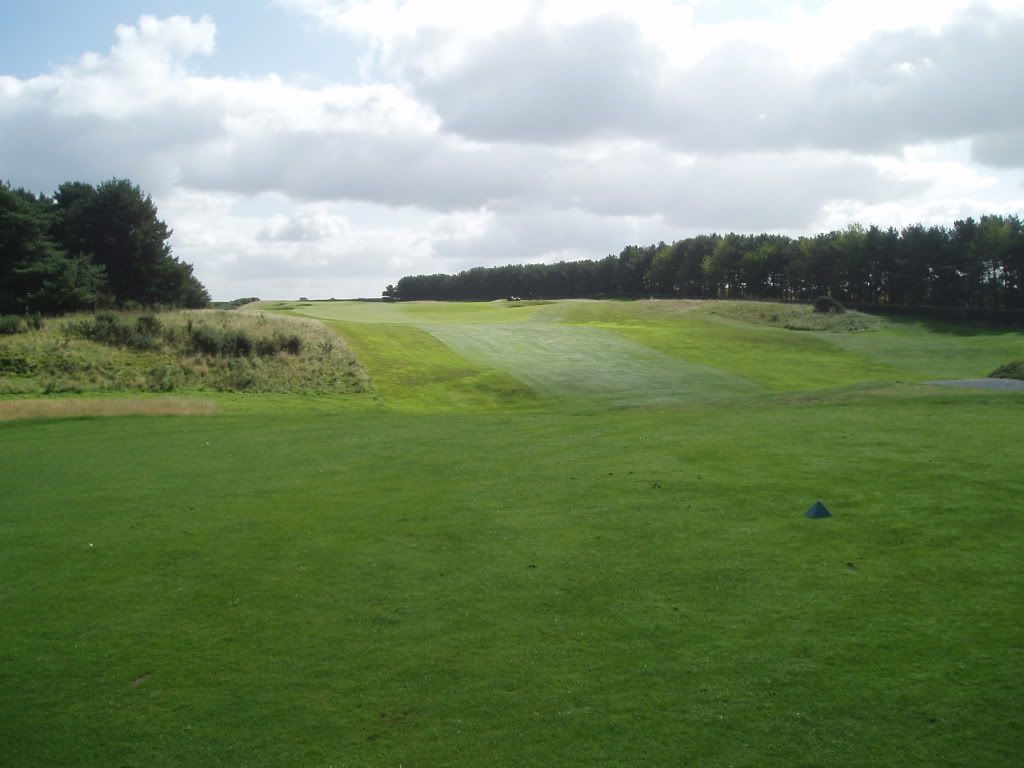
The opening drive sets a stern tone, uphill to a slightly domed fairway which throws any ball hit up the left into the rough.
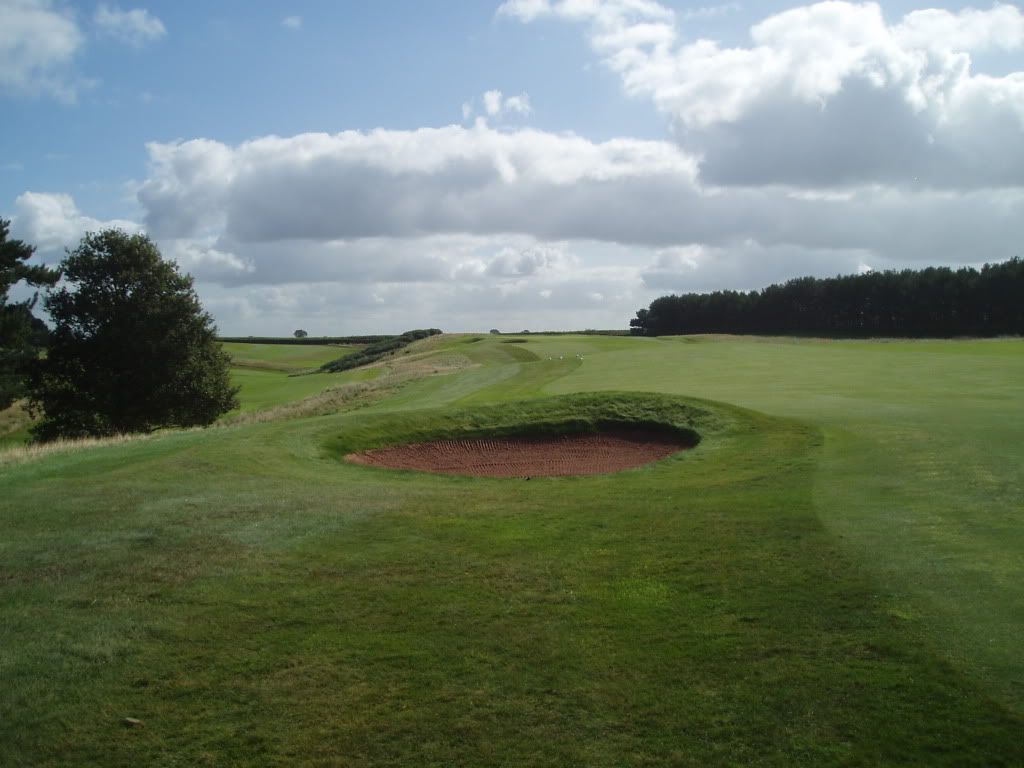
It is still a good distance to the green, across low ground.
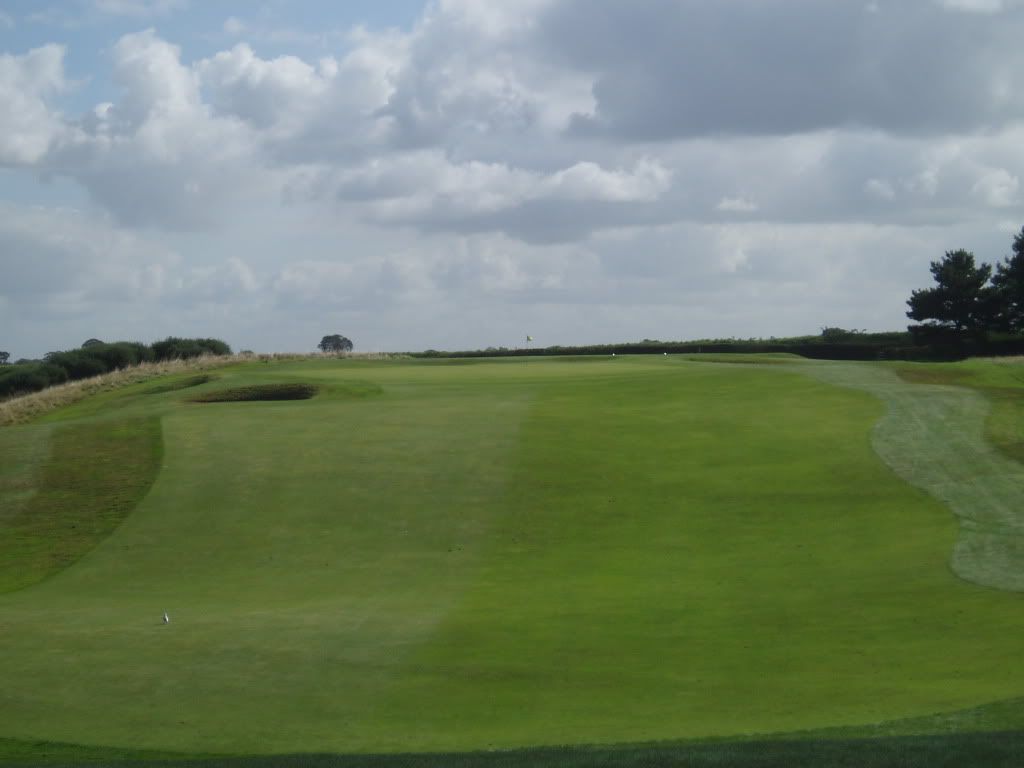
Only a full carry will make it onto the putting surface.
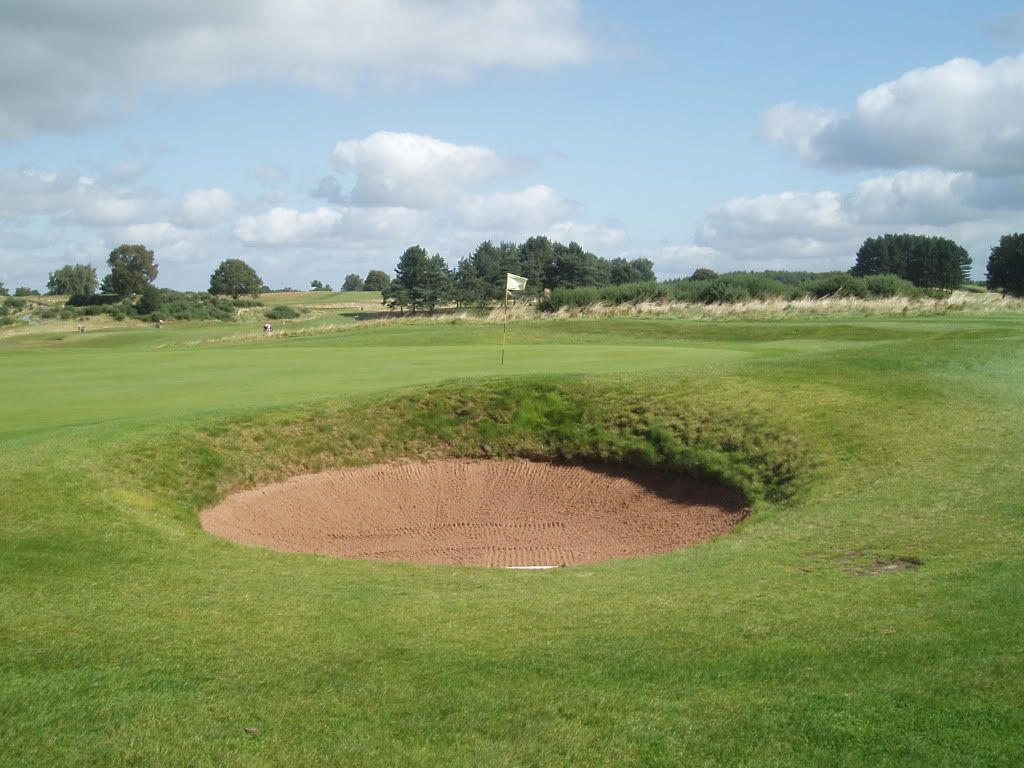
The bunkers are certainly not eye candy, but they are cunningly placed and handsomely presented.

Looking back down the fairway you get a better idea of the climb you have made and the use Fowler made of the undulations for many green sites.
2. 443 yards par 5
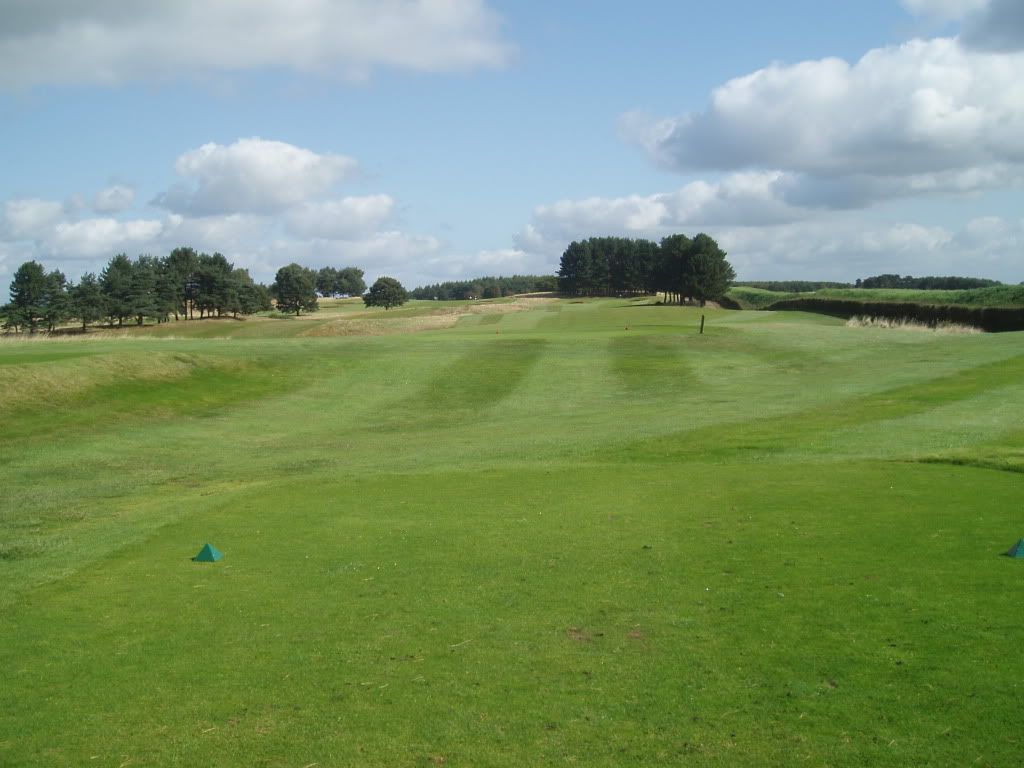
This hole was a bogey five (DFGC only abandoned the bogey system in recent times) and retains five as its par rating, but good players think of it as a two shot hole. Again the drive is uphill, but this time the better line is up the left.

This photo may convey something of the left to right lie of the land, and it shows another good use of low ground before the perched green.
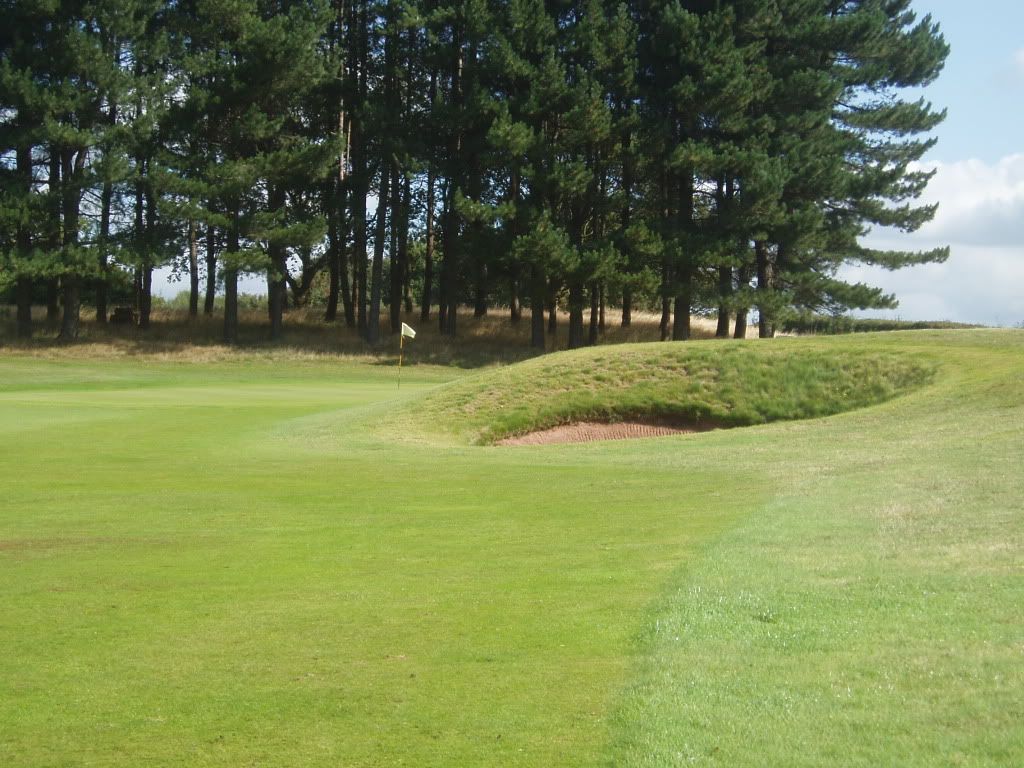
Another well-placed bunker, from which escape is far from certain if you are in the wrong bit of it.
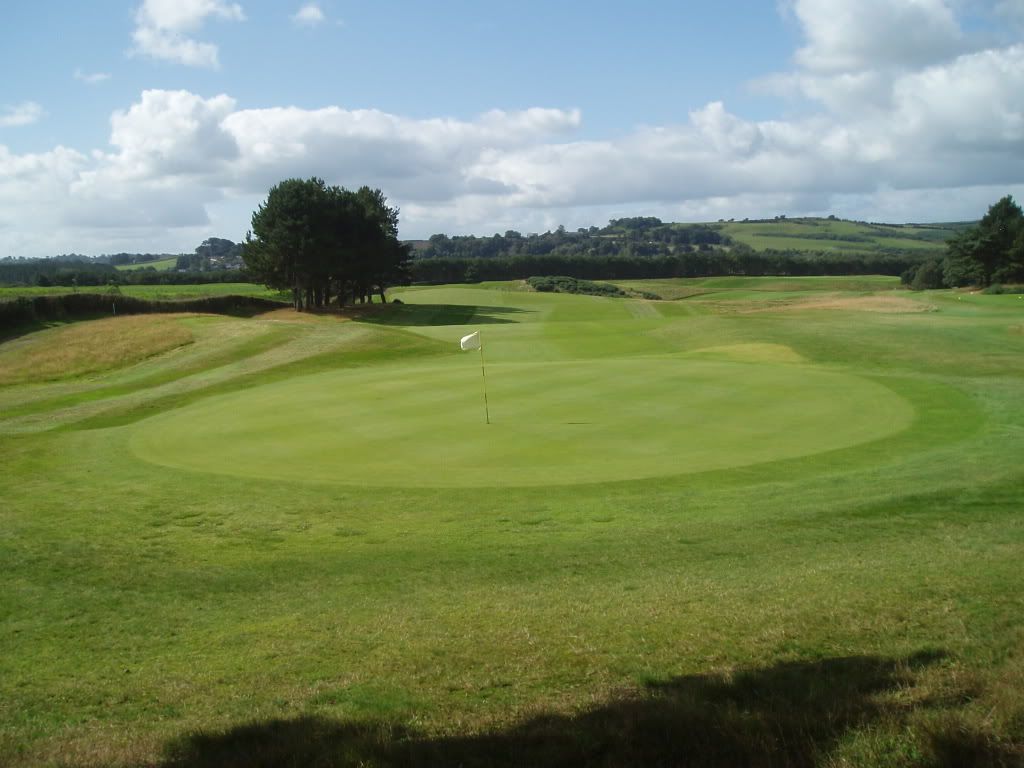
From behind the green you can see that the putting surface used to be bigger, but this size is felt appropriate for a par 5.
3. 410 yards par 4
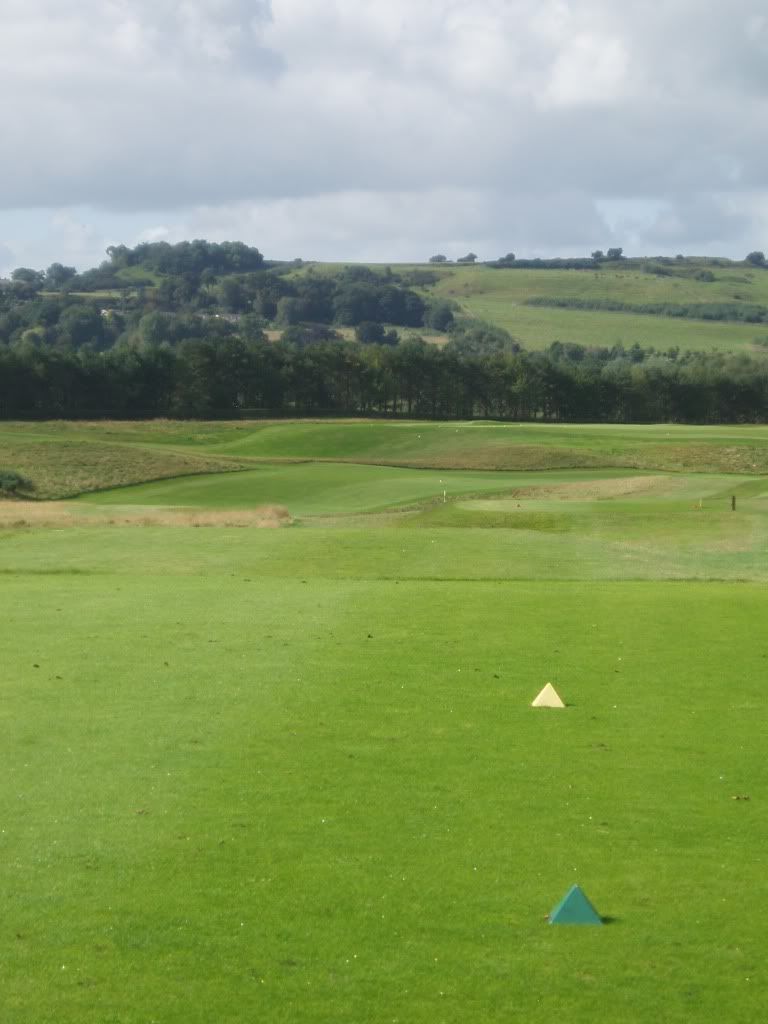
The line is difficult to determine from the tee, but there is a marker post and you are advised not to take driver as there are hidden bunkers.
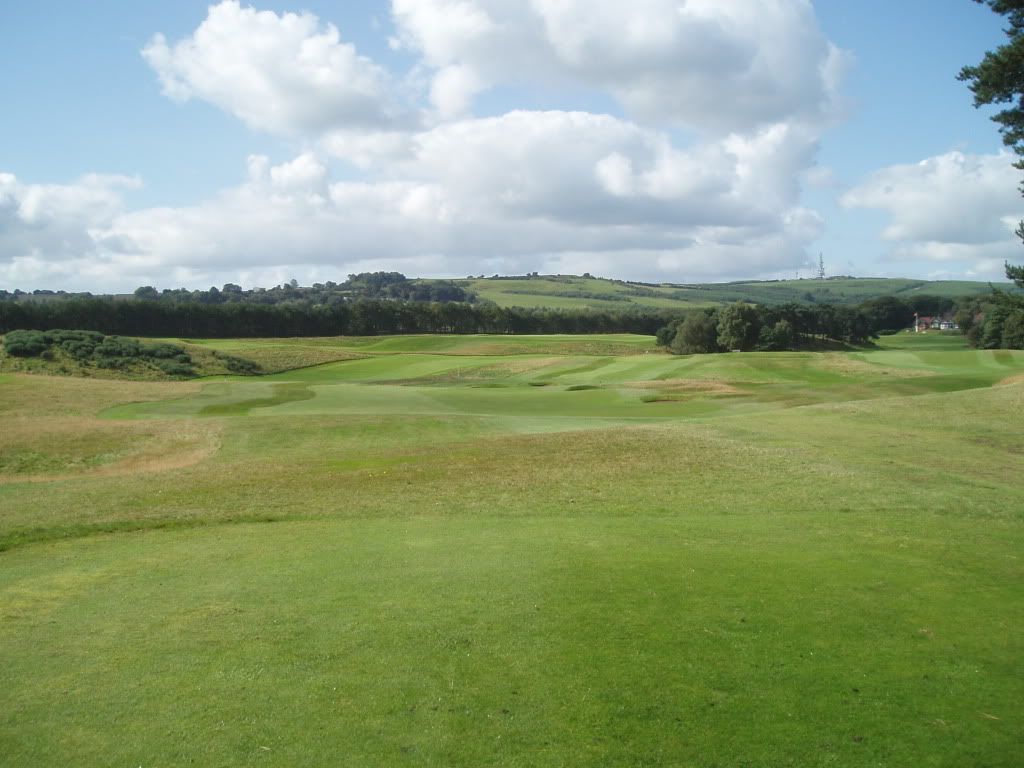
A little farther on you can just make out the marker post and the bunkers.
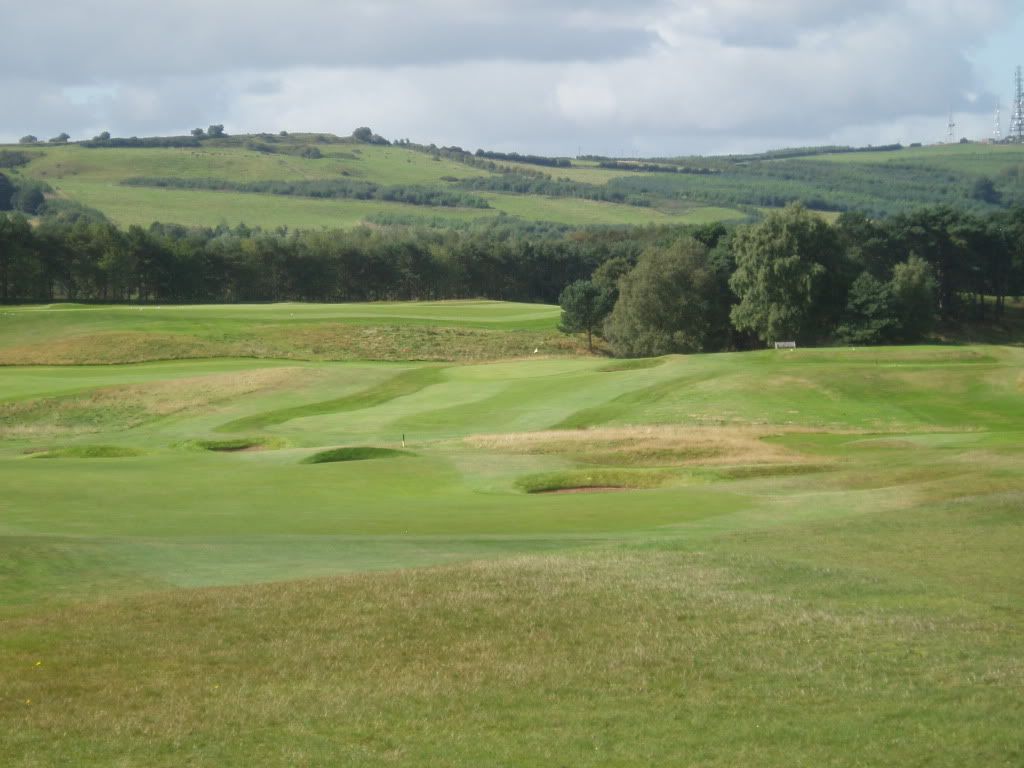
The hole only reveals itself gradually.
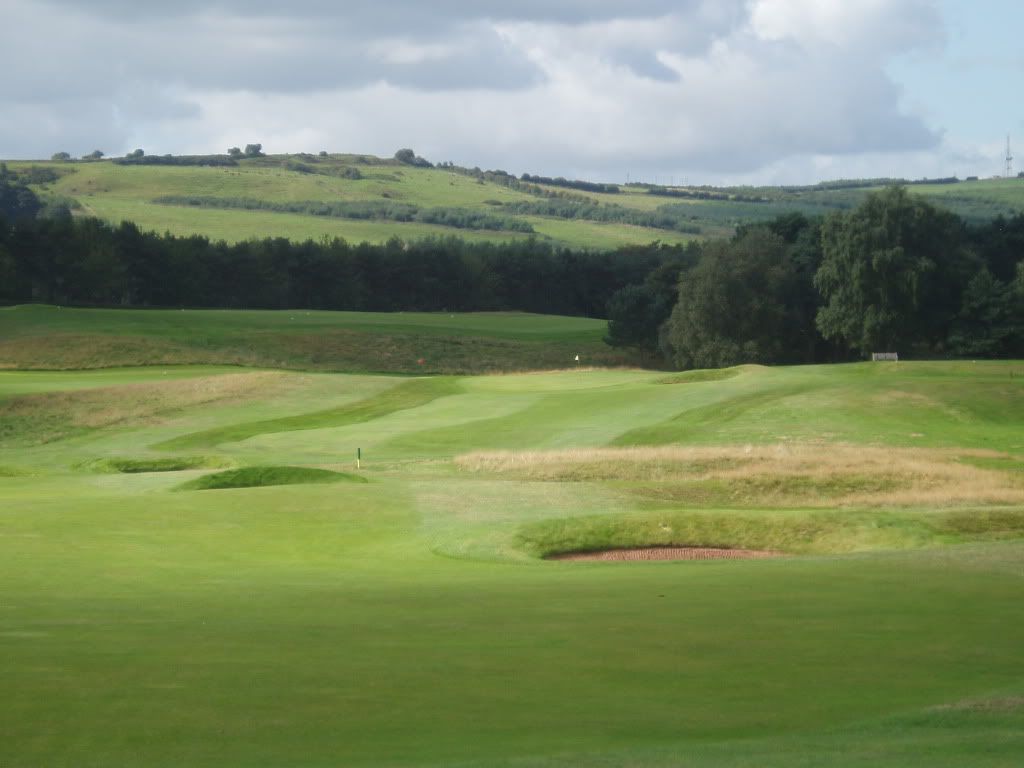
The green is really quite a small target at this sort of range, almost isolated amidst the rolling ground.
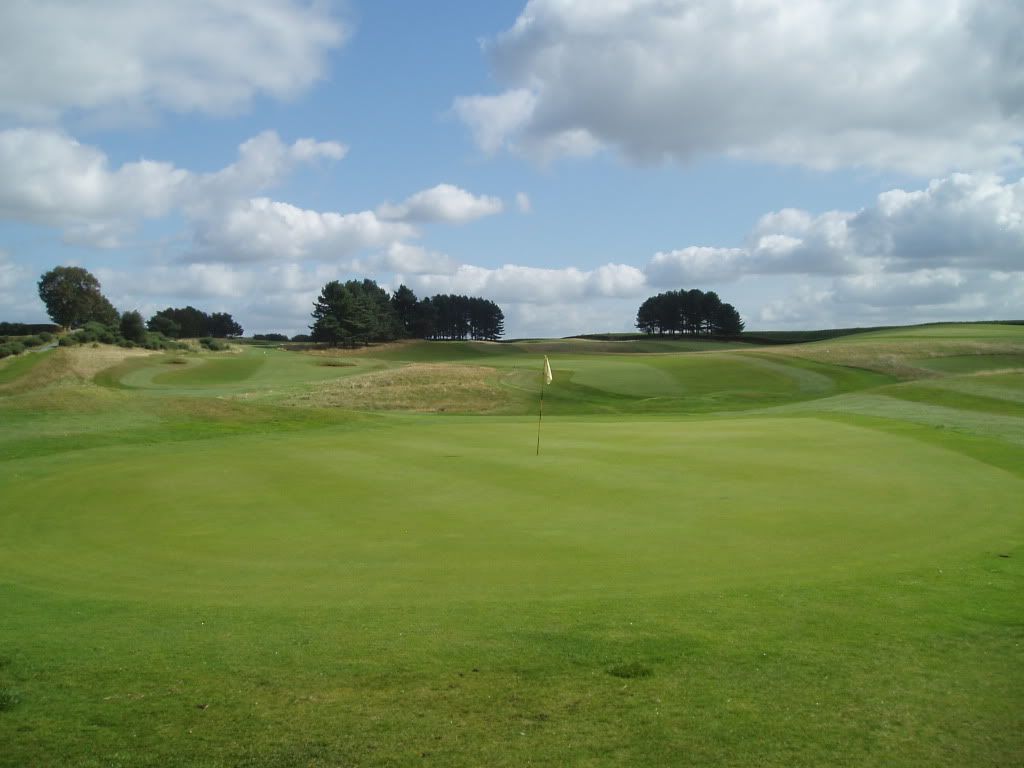
The putting surface has more contour than either of its predecessors, demanding a perfectly weighted approach shot.
4. 212 yards par 3
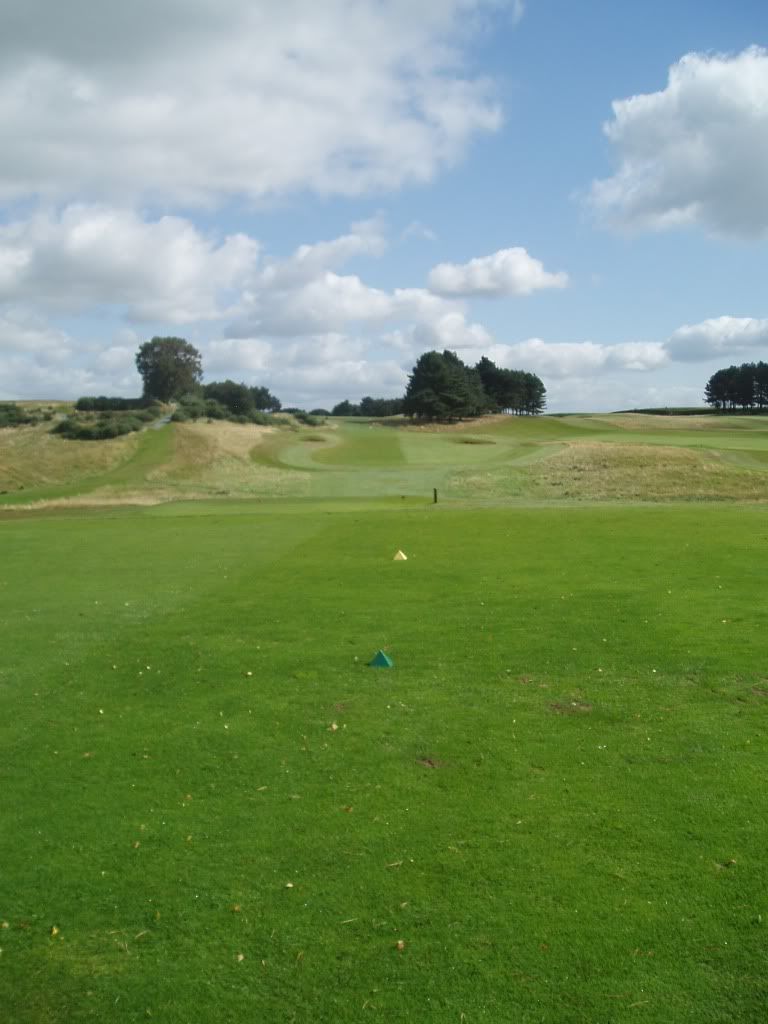
A tough hole, the green behind an obscuring ridge, with a big left-to right bounce or roll on landing.
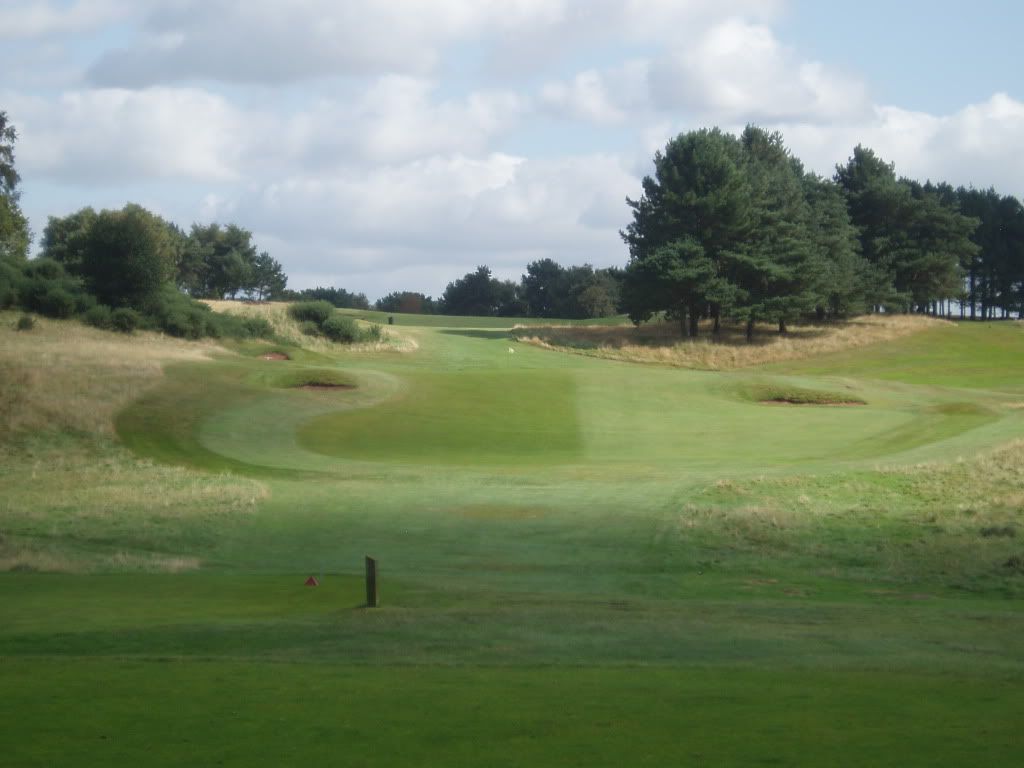
Itís not quite so daunting from closer.
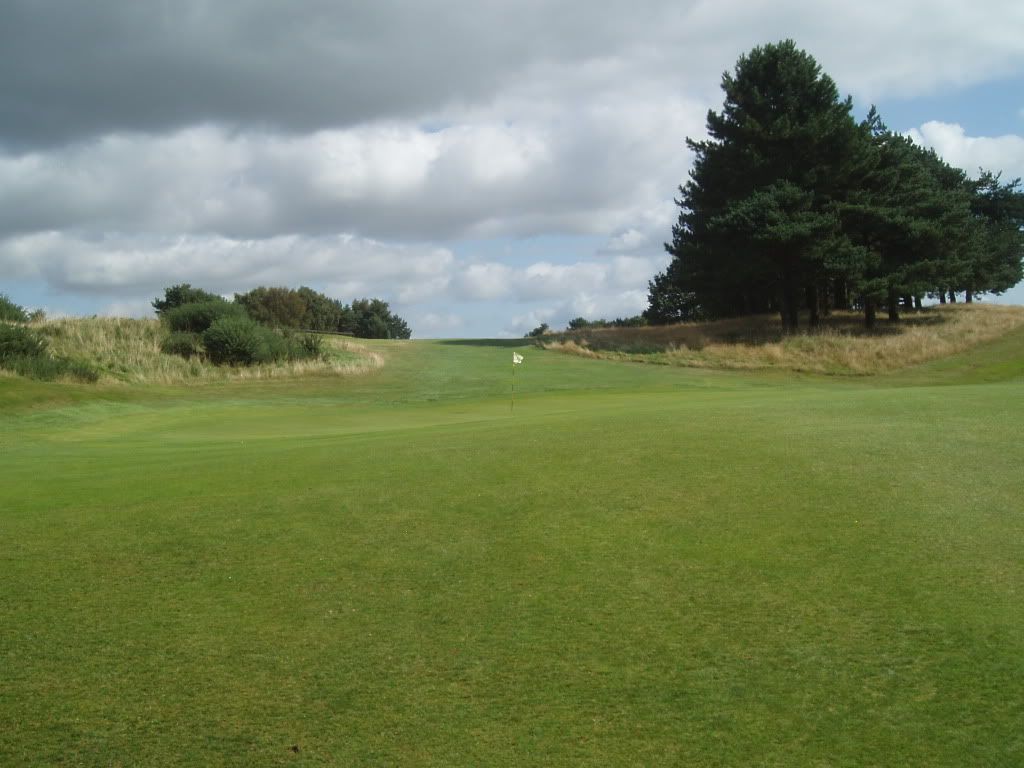
Whatever you do, donít miss on the right because the ball races away down this bank and the chip back is far from easy.
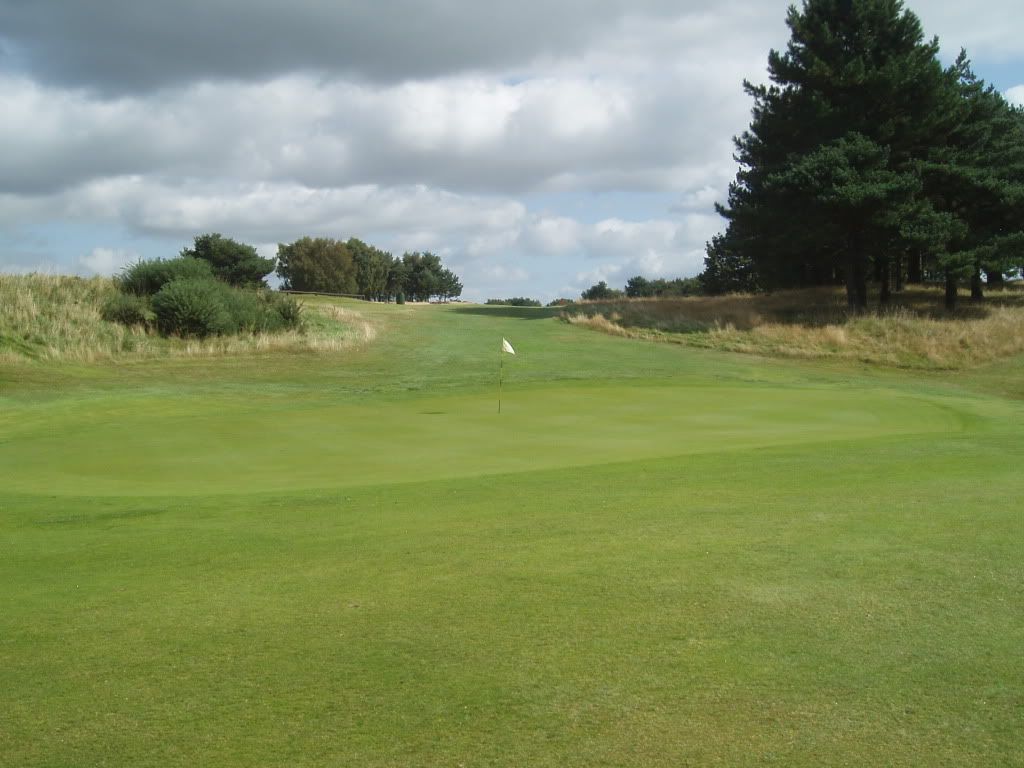
Pin positions at the front or back right are very tricky.
5. 431 yards par 4
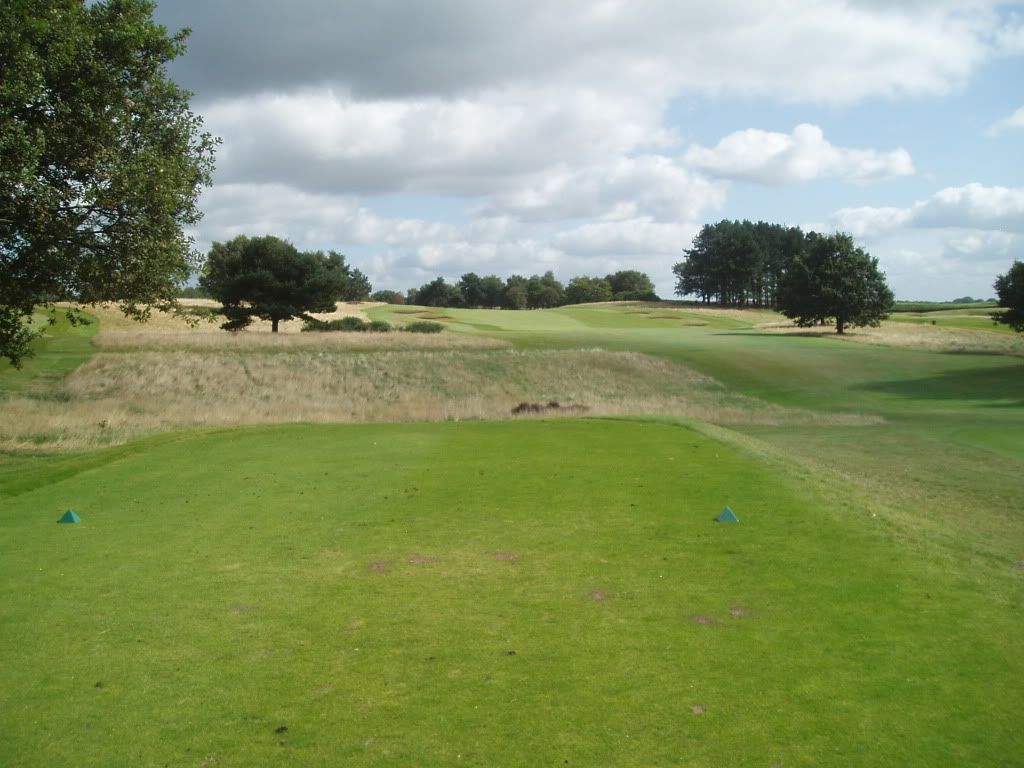
Many say this is the toughest starting sequence in Cheshire. Again pressure is put on the tee shot by the need to make distance uphill. The line is very important with advantage given to those who hold the shot left.
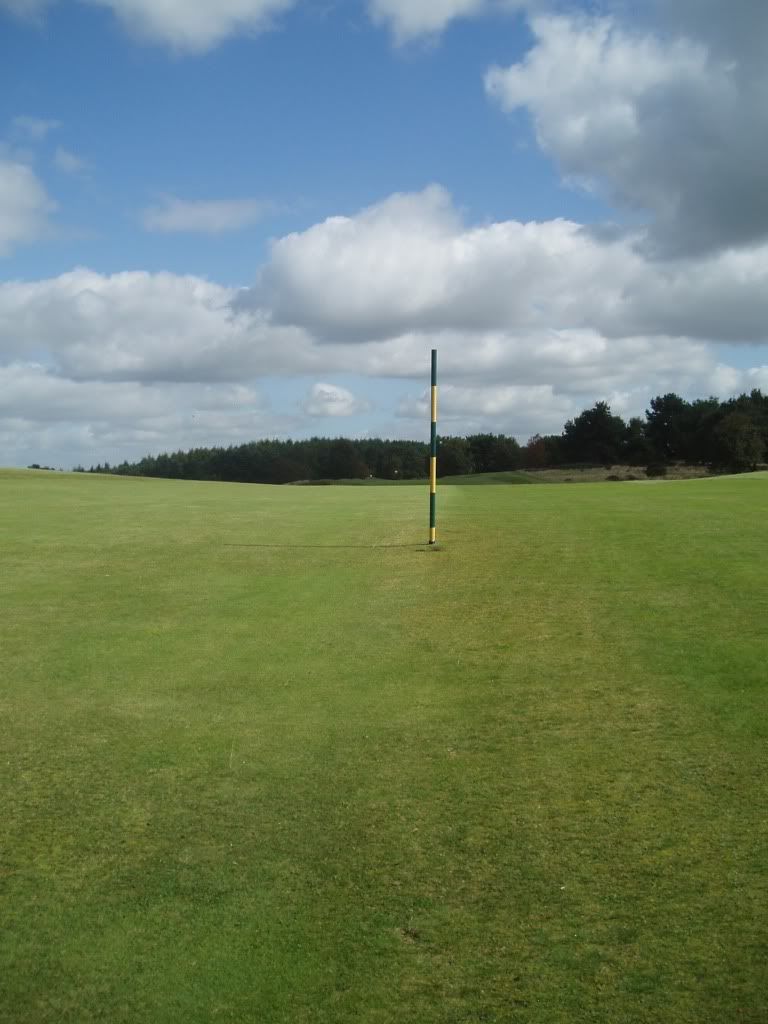
Again there is a marker post because the drive should finish out of sight in the valley beyond.
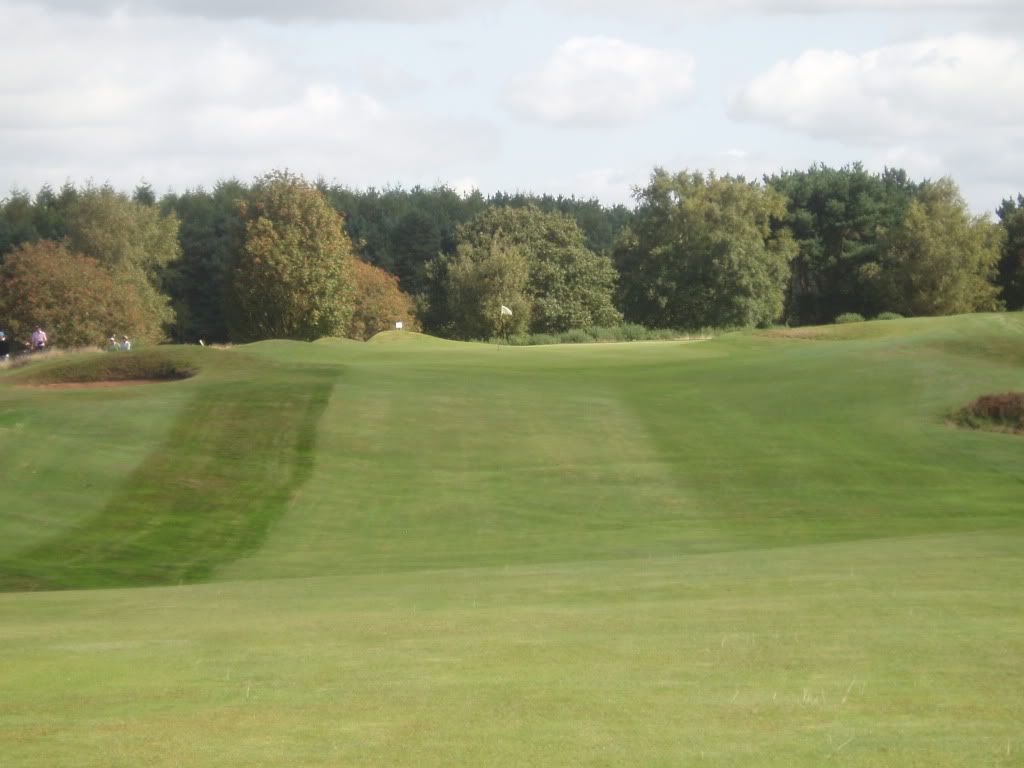
Another hilltop green in prospect.
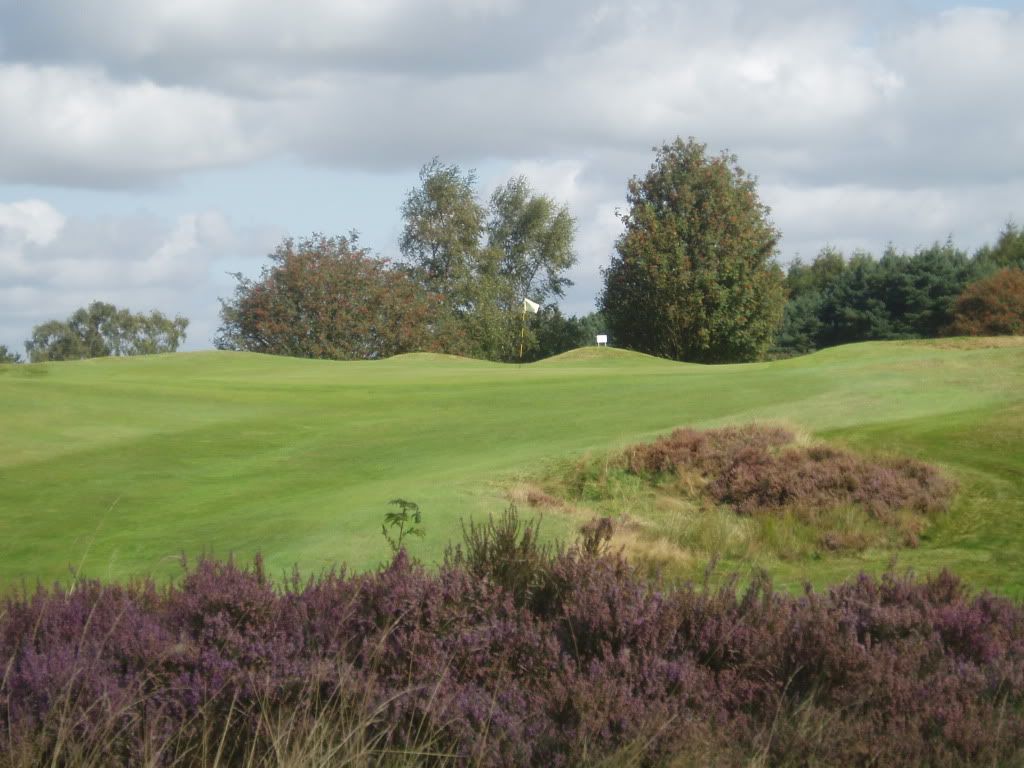
There is trouble aplenty if you stray from the line.
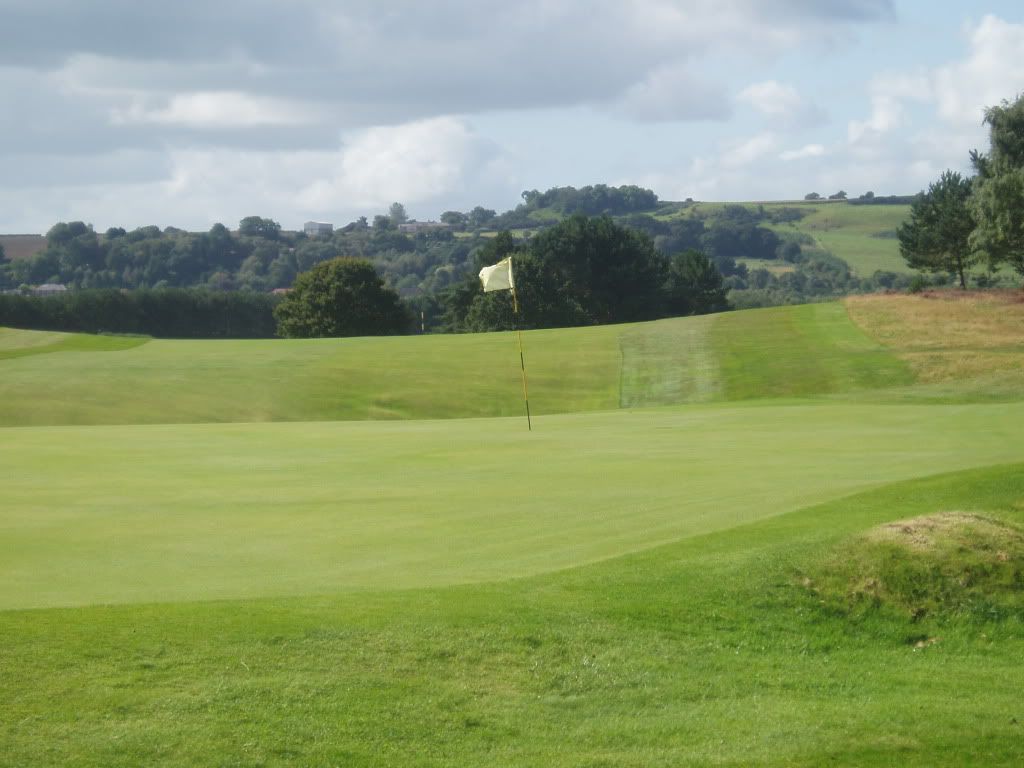
From behind it all looks so benign but only just off the green to the left is desperately rough country, while if you run off the green at the back you will almost certainly lose your ball.
6. 149 yards par 3
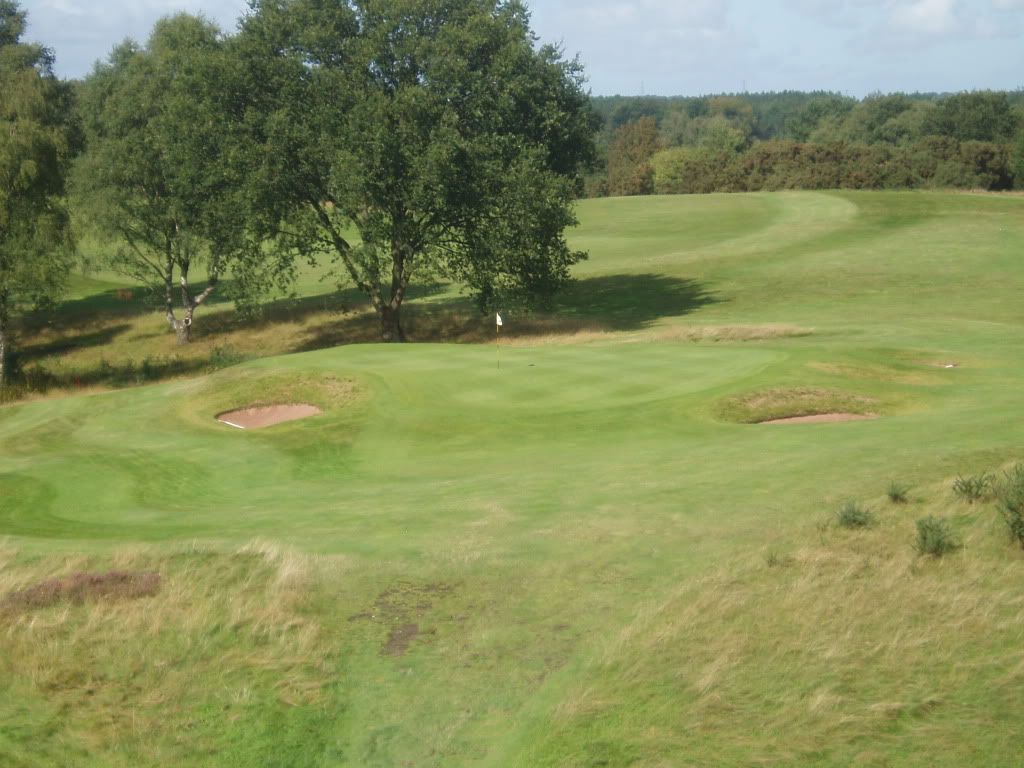
A very short hole, but its putting surface is minuscule, raised up and well-defended.
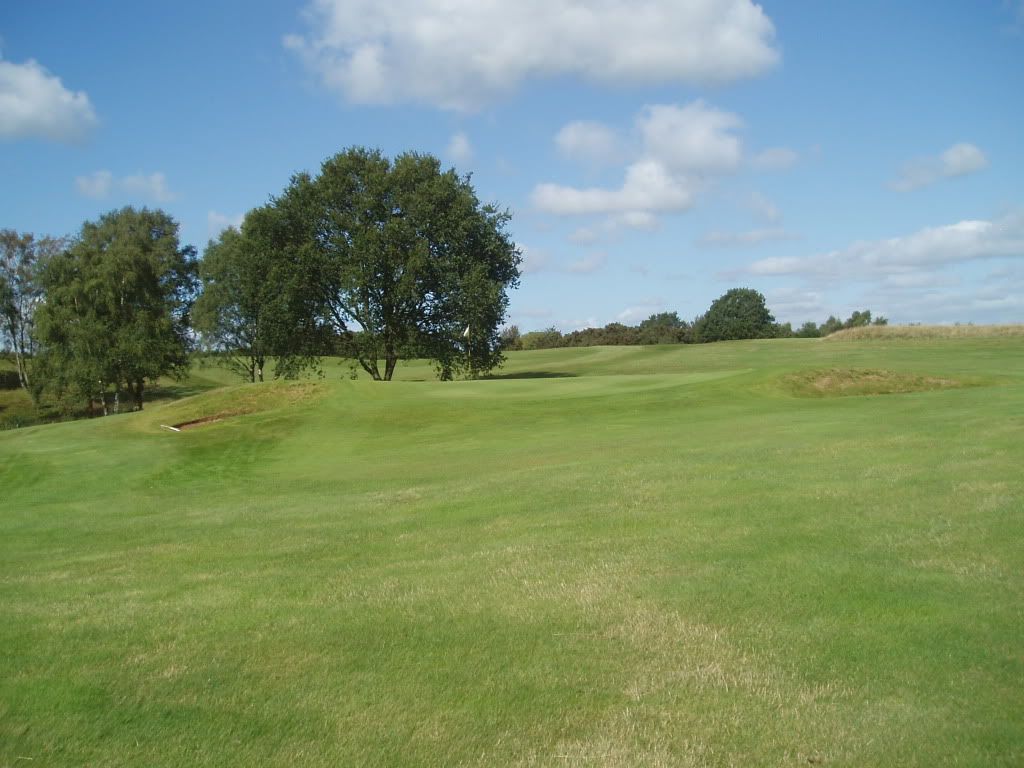
Chipping is seriously tested if you miss the target.
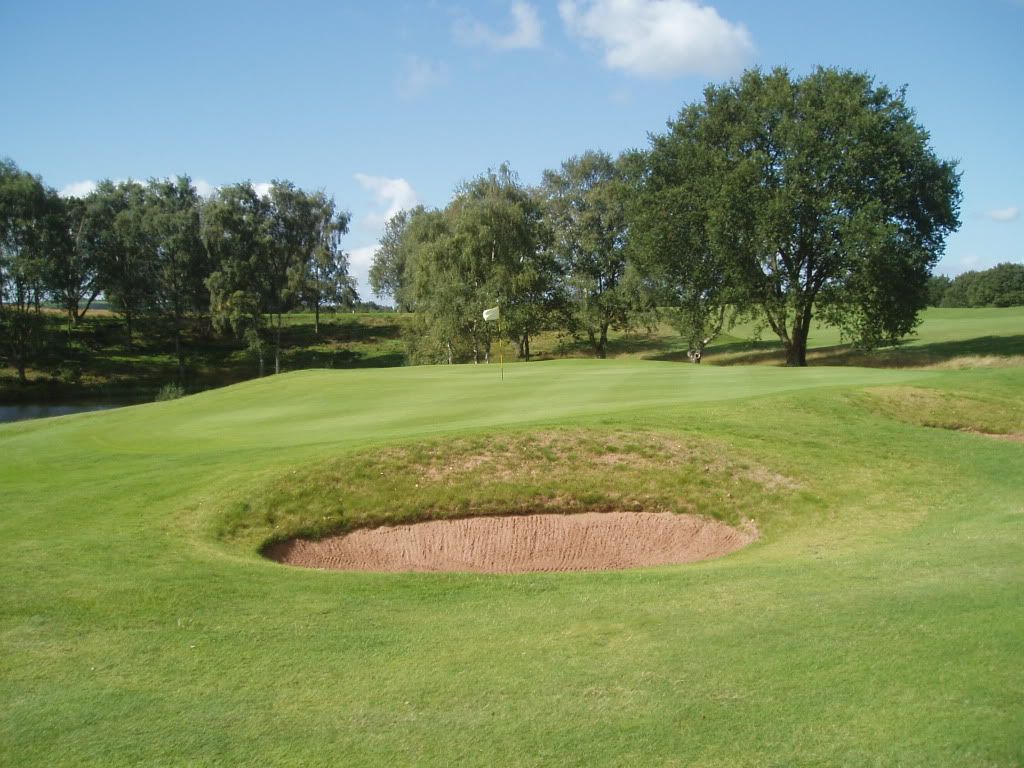
Especially so if you have to chip over the bunker!
7. 473 yards par 5
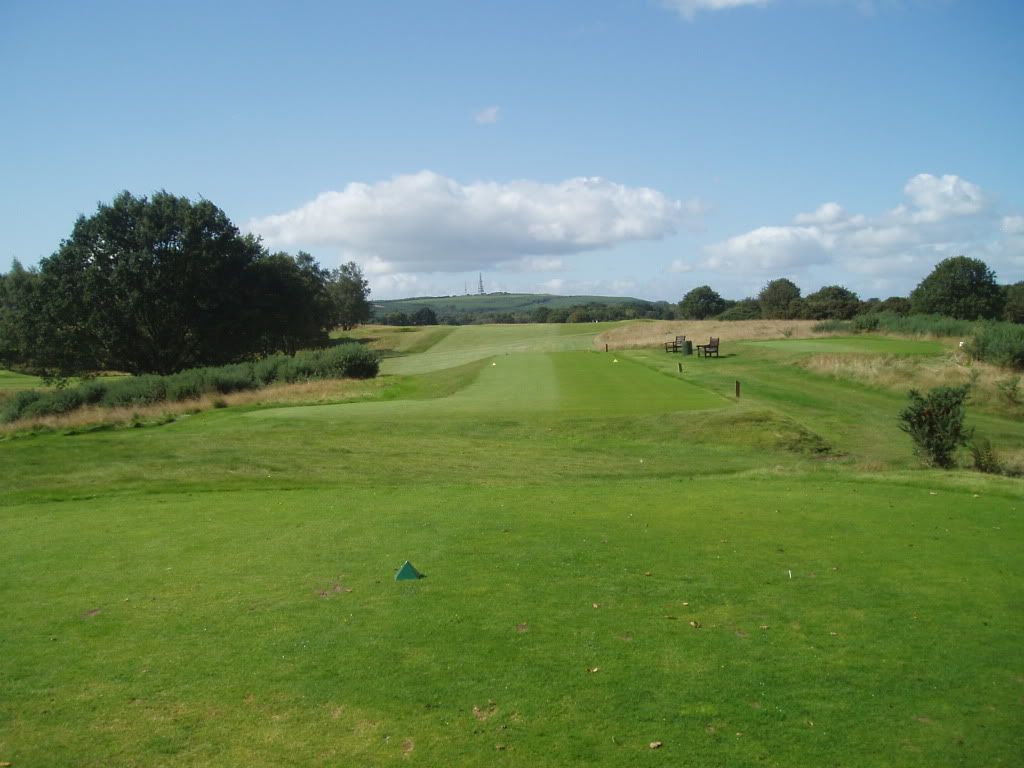
A short par five that should be in reach in two shots for the good player.
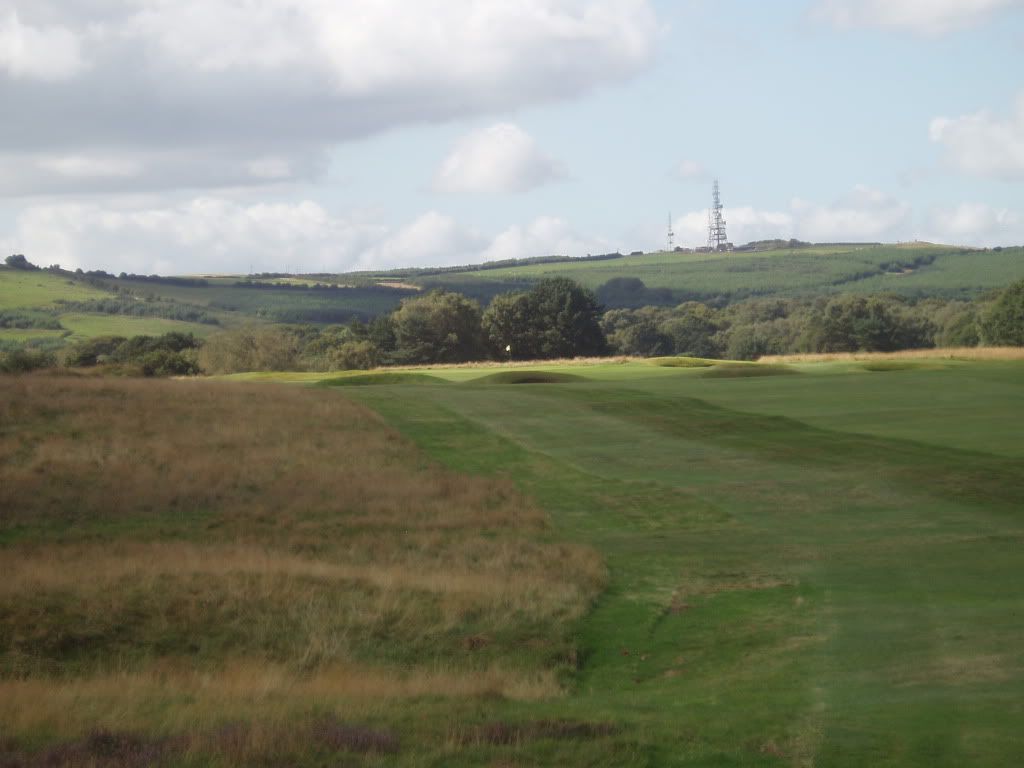
The rough on the left is to be avoided.
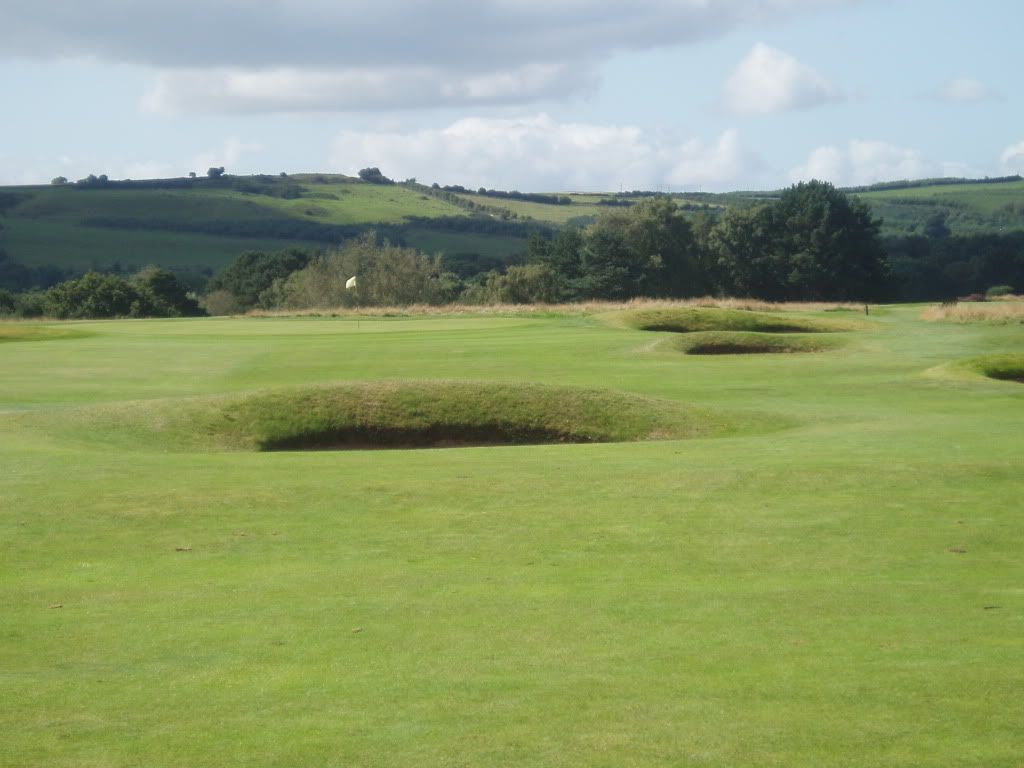
Bunkers on the run in foreshorten the view. The green is farther away than it looks.
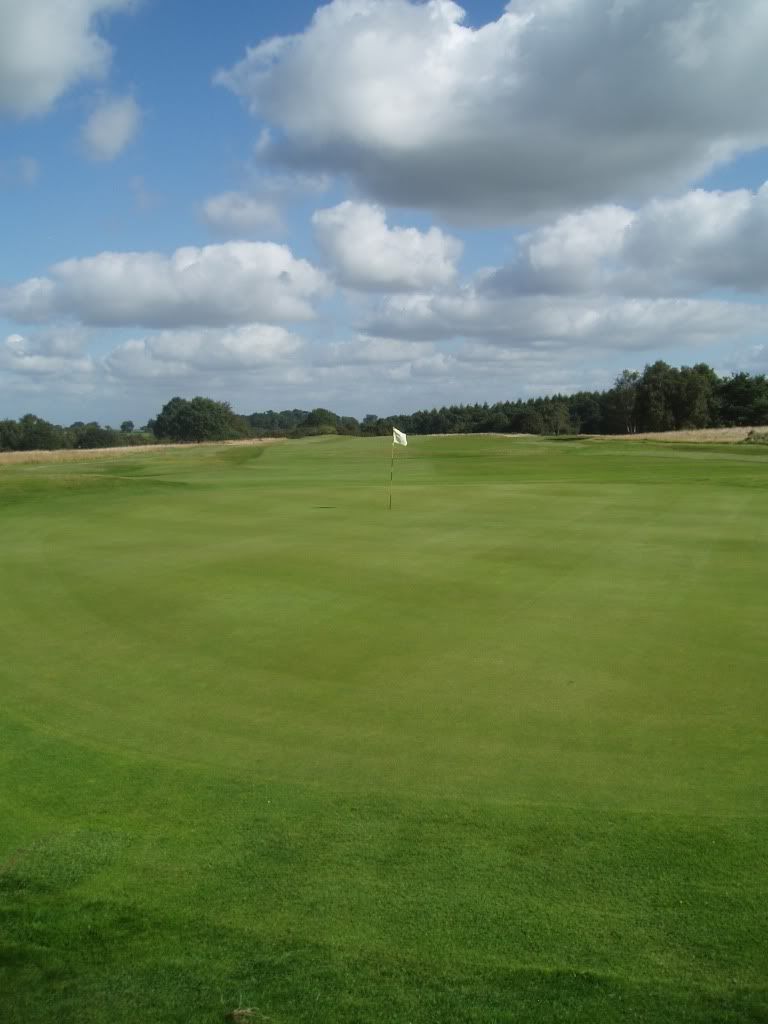
Part of the charm of the hole is the fact that it is less dramatic than anything so far, but it is exposed, out on high ground, adding to the difficulty of distance judgement.
8. 421 yards par 5

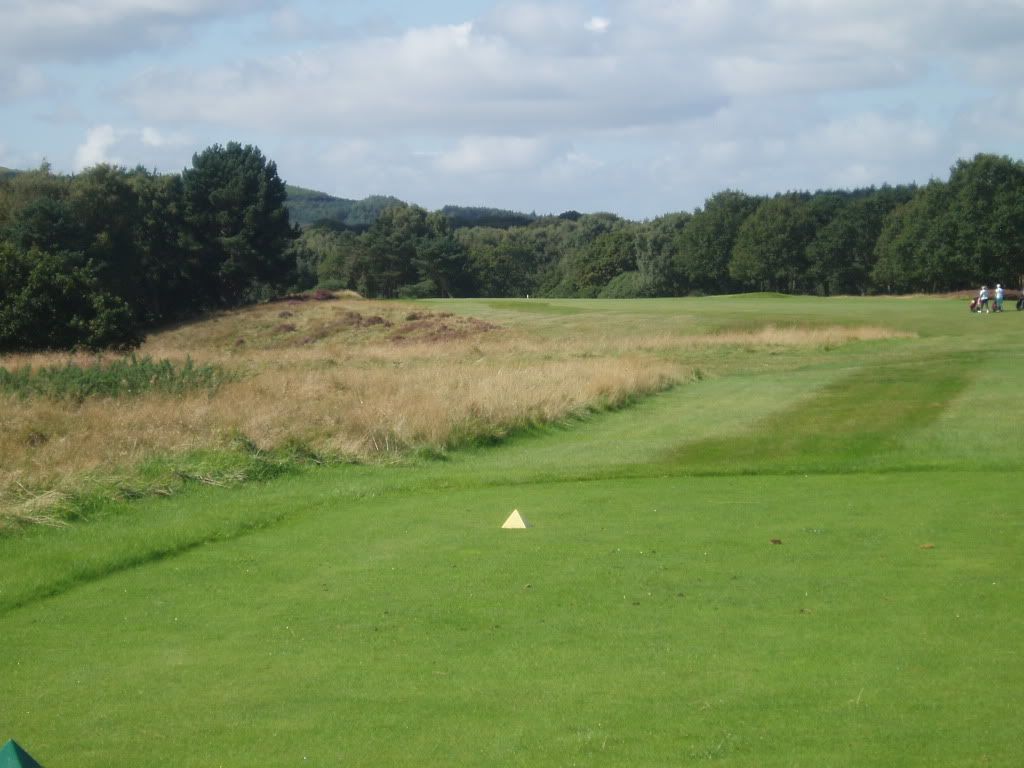
Two views of this excellent tee shot. It may seem as if there is greater safety in favouring the right of the fairway but those bunkers grasp everything. If you can manage to hold the left side of the fairway you will have a comparatively easier approach shot.

The bunkers on the right of the fairway.

At last we can see the green, on the end of a downslope. It is well-nigh impossible to leave yourself an uphill putt.
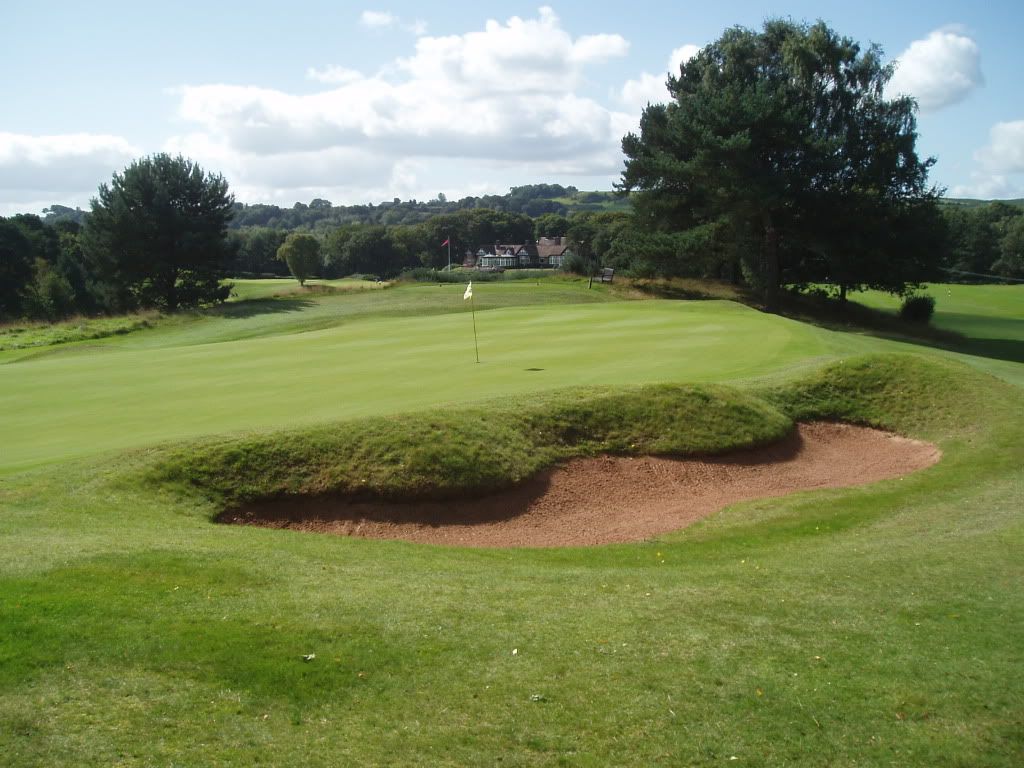
It is a narrow green with bunkers in close attendance and ghastly trouble further afield.

Donít overshoot!
9. 331 yards par 4

The hole only reveals itself as it uncurls.
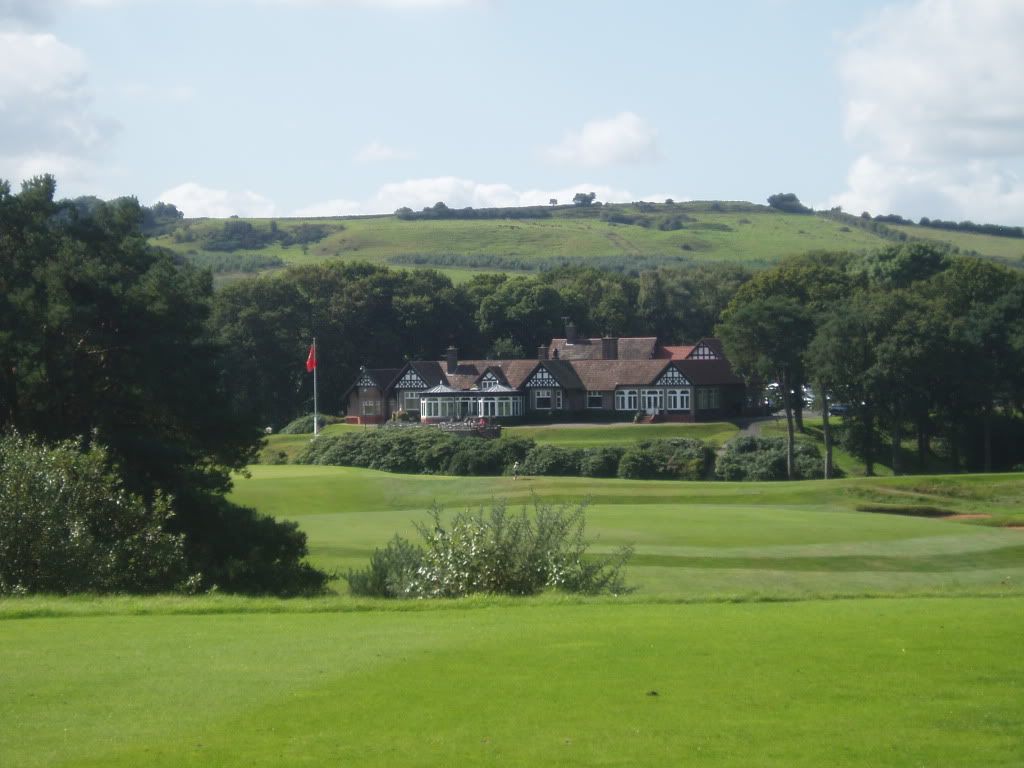
While the green may be driveable for some the smart play is to find the flattish ground directly in front of the clubhouse from which the pitch is easier to control.
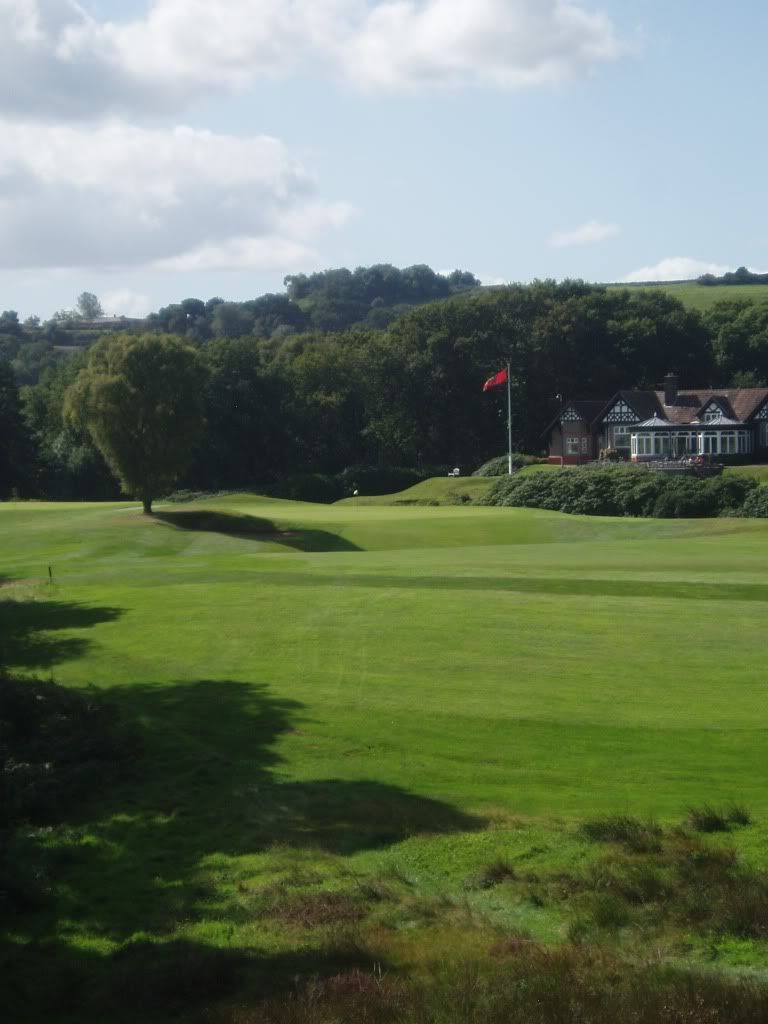
If you were daft enough to try to drive the green you could all too easily perish the wrong side of that tree.
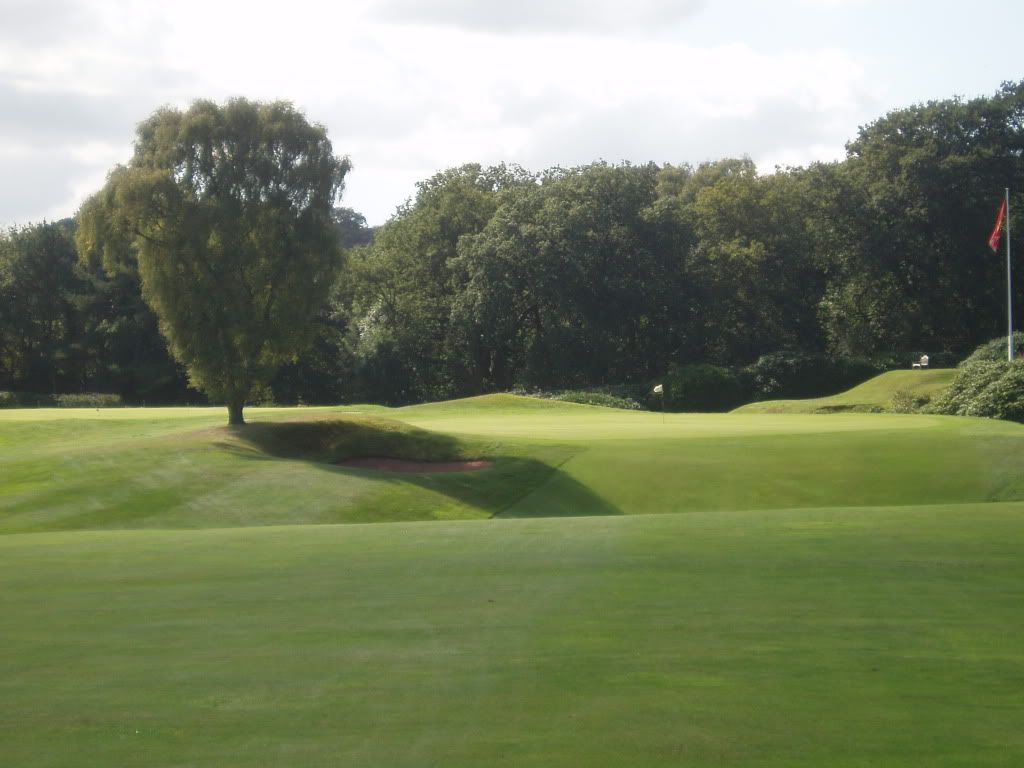
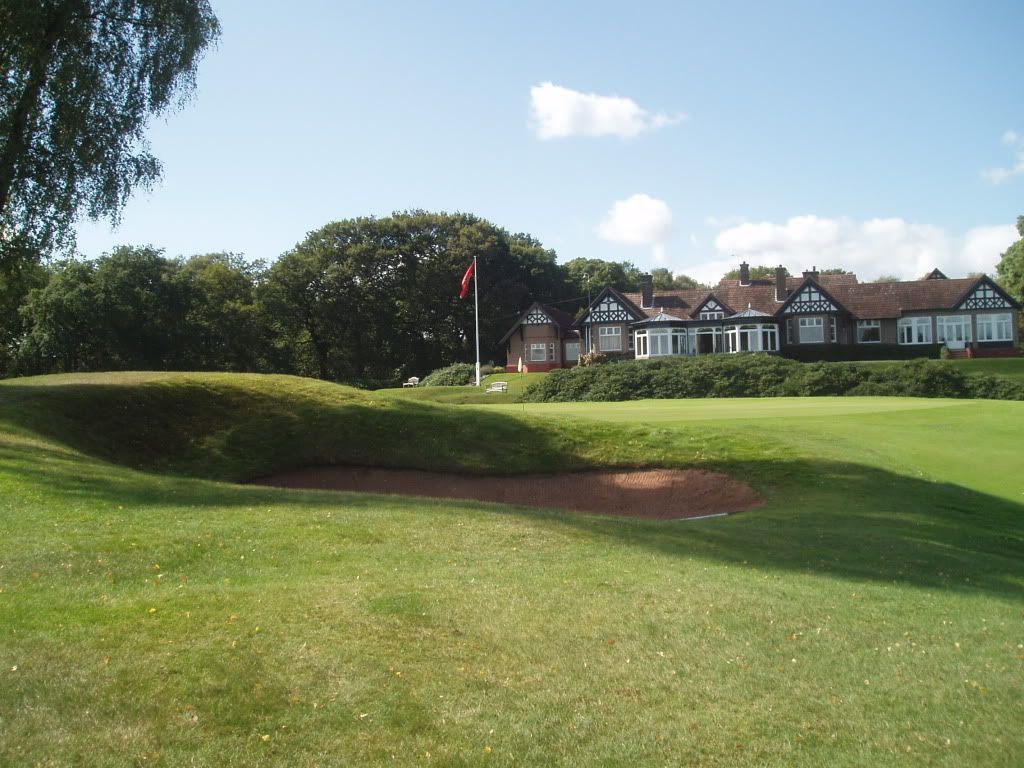
It is a most attractive hole.
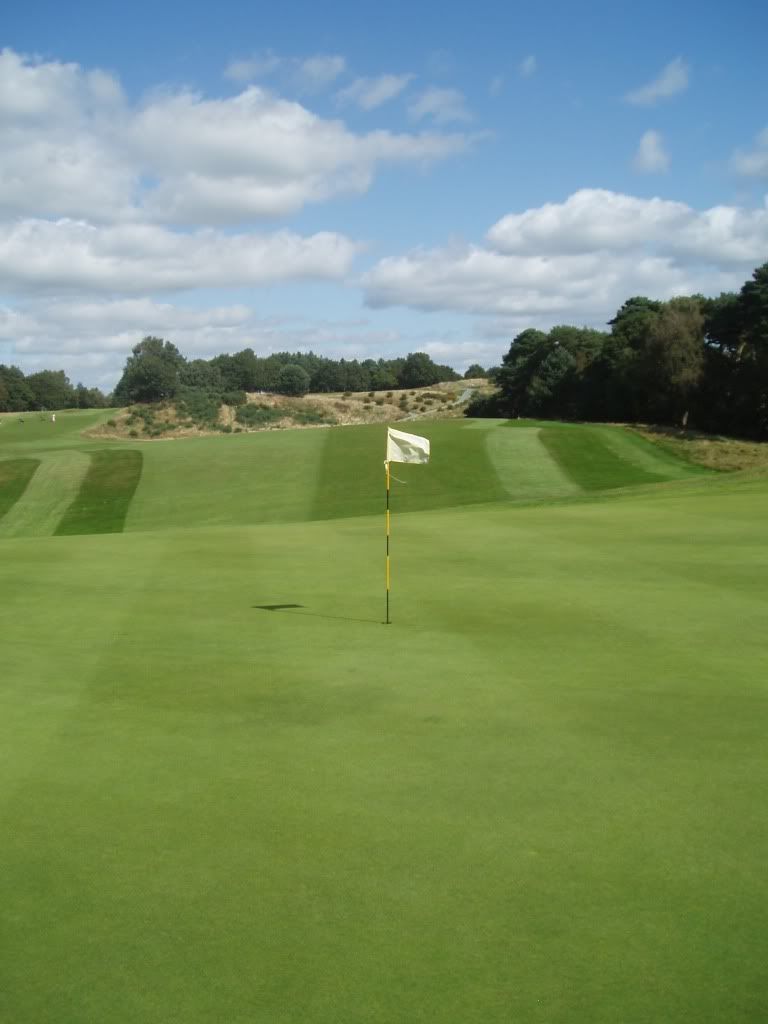
Perhaps it is even more beautiful looking back up the fairway.
Iíll not finish this today. The back nine will follow tomorrow.